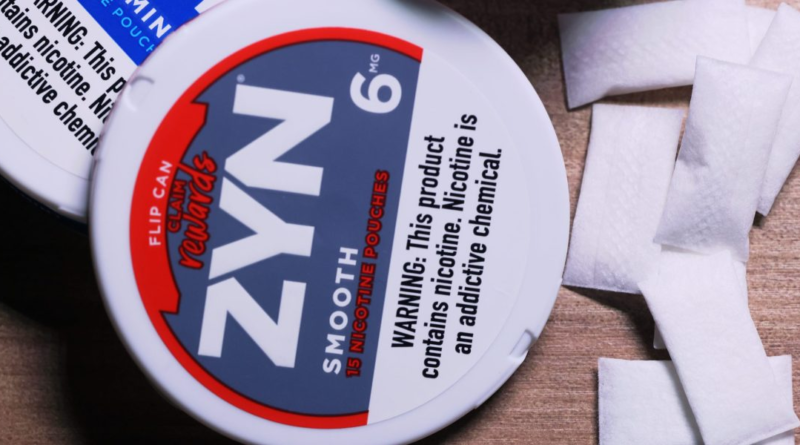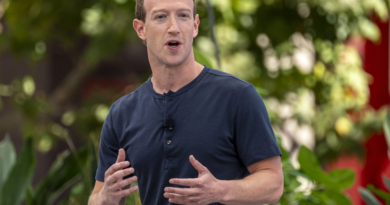Nicotine patches, like Zyn, are used by 400,000 teens. Here's why some experts say 'it's reasonable to be concerned'
Hunter “Ratch” Ratchford is an Alabama college student with 42,000 followers on TikTok. That’s where he posts, pretty much exclusively, about Zyn, a brand of flavored oral nicotine pouches that come in bright round cans and flavors like cool mint, citrus, and cinnamon.
Three years ago, says Ratch, one of his fraternity buddies introduced him to the product. “He said it helped him focus when he was having back-to-back classes, so I tried it,” he says, noting that it helped him too and that he liked the buzz. “I’ve been hooked ever since.”
Today, he says, he goes through a can to a can and a half a day—about 25 pouches total—placing a pouch between his gum and his lip or cheek around every 15 minutes to deliver the maximum-available-in-the-U.S. 6 mg of tobacco-free nicotine (compared to a cigarette’s 10-12 mg) directly to his bloodstream through the lining of his mouth. His frequent posts—sponsored by Snus Town, an online UK-based shop that sends him 10 cans a week to sample—range from dreaming up new Zyn flavors to simply declaring his love for the little white pouches.
And while Zyn’s website says its product is for adults 21 and over who currently use nicotine, Ratch, 22, says that he’d never smoked or vaped (and still hasn’t) when he started using as a teen. “Zyn is the only type of nicotine I’ve ever used,” he says.
Now he’s just one of the estimated 2.1% of adults (5.2 million people) using smokeless tobacco products in the U.S., according to latest numbers from the Centers for Disease Control and Prevention (which do not break out nicotine pouches specifically).
Ratch is also not the only Zyn user to have started as a teen. According to the National Youth Tobacco Survey of 2023, an estimated 1.5% of high school and middle school students (more than half of them boys), representing 400,000 adolescents, use nicotine pouches—around the same percentage (1.6%) who smoke cigarettes, but much less than those who vape (7.7%).
Those numbers have remained unchanged in recent years, noted an April press release from the FDA regarding underage sales of nicotine pouches by retailers. Still, said Brian King, director of FDA’s Center for Tobacco Products, “FDA remains concerned about any tobacco product that may be appealing to youth and we will continue to closely monitor youth use of these products.”
Zyn sales have skyrocketed
Thanks to users of all ages, Zyn and other oral nicotine products (with other brands including Velo, On! and Rogue) comprise a market expected to bring in $2 billion of U.S. revenue this year—despite most brands, Zyn included, having none of its products authorized for sale in the U.S. by the FDA. That’s because they hit the market in 2014, before the FDA had regulations for new tobacco and nicotine products in place, and are now being required to retroactively prove they have enough public-health benefit to remain available. Those decisions are now pending.
Sales, meanwhile, are skyrocketing, seeing a six-fold spike between 2019 and 2022. And Zyn maker Swedish Match’s parent company, Philip Morris International, reported a nearly 80% rise in sales during the first quarter of 2024 over the same period last year, leading to a current shortage in some markets.
Many blame youth usage on the preponderance of Zyn content on social media—where fans, or “Zynfluencers,” can be found trying new flavors for the first time or building sculptures from the hundreds of empty cans they’ve collected, using slang terms like “lip pillow” or “upper decky” because of where the pouches are placed in the mouth.
It’s all fueled some fears that Zyn could be the next Juul in terms of youth appeal and the implications for public health—something Sen. Chuck Schumer (D-NY) seized on recently, as he called on regulators to investigate Zyn because of its appeal to teens. That prompted pushback from some prominent conservatives, including Tucker Carlson—who had already gone viral in a Zyn-themed video posted to Instagram by prankster-influencers the Nelk Boys. In response to Schumer, he declared, “Zyn is not a sin.”
A spokesperson for Philip Morris International provided the following statement to Fortune:
“For the nearly 30 million Americans who smoke, Swedish Match is committed to developing products such as ZYN that are scientifically substantiated as a better alternative to continued smoking. Swedish Match goes beyond legal requirements to ensure our marketing is directed toward legal age nicotine users above the age of 21. We do not use social media influencers, refuse requests for such partnerships, age-gate our digital channels, and only use adult-oriented flavors. We’ve also joined We Card’s Advisory Council, a nonprofit serving retailers of age-restricted products, to work with them to educate and train retail frontline employees on the need to card for nicotine pouches, and ensure pouches are included in 21+ signage across the vast majority of brick and mortar shops. Manufacturers, regulators, retailers and social media platforms must work together to ensure these products are only used by people 21+, and we believe we’re doing our part to achieve that objective.”
Regardless, it’s important for parents to be aware of Zyn and its risks, says Rees, adding, “It’s reasonable to be concerned anytime a child is using an addictive substance or product.”
Here’s what else parents need to know.
Nicotine addiction is real and has health risks
“Addiction in itself is considered a health problem,” says Rees, “and nicotine use disorder has implications for young people’s social and emotional development.”
In part, he says, “It narrows the behavioral repertoire, so rather than choosing activities that might be beneficial or that might enhance engagement with other people and the world in positive ways, they tend to make much narrower choices that substance use disorder imposes.” Instead of hanging out with friends, for example, teens who are addicted “will hang out alone and use nicotine.”
Other health risks of nicotine include a moderately elevated risk of increased blood pressure, heart rate, flow of blood to the heart, and a narrowing of the arteries, according to the American Heart Association. But the risk of cardiovascular disease, Rees stresses, is much less than with smoking. Most research points to cigarette smoke, not nicotine, as the cause of cancer, although some research suggests that nicotine may lead to a type of DNA damage that could elevate the risk of cancer.
Further, a recent small study of pouch users found self-reported side effects including mouth lesions, upset stomach, and sore throat.
On the positive side, there is “some evidence” to support it can help with focus, but “could have a deterioration in focus if you are in withdrawal,” notes Lynn Kozlowski, a longtime tobacco researcher and professor emeritus at the University of Buffalo’s School of Public Health and Health Professions.
What most concerns Kozlowski is a recent study from Truth Initiative, an educational nonprofit that discourages tobacco and nicotine use. It found that most young people aged 15 to 24 who use oral nicotine pouches also smoke cigarettes (73%) and that nearly half (49%) also vape.
Those findings, he believes, are why he feels parents needn’t get too distracted by Zyn.
“Smoking is the much more important thing to be discouraging,” he says. “What I am concerned about is if you’ve got clientele among the youth who are largely experimenting with smoking and pouches you don’t want any messaging to make people more afraid of pouches than cigarettes.”
He pointed to a recent survey in which most smokers wrongly believe that vaping is equally or more harmful than cigarettes. “Oh my god, is that wrong,” he says. “The major cancer causing ingredients are things that come in a combustive product … Pouches are very much in the toxicological ballpark as nicotine lozenges and gum—they don’t get into your lungs. And most of what kills people is getting smoke in the lungs.”
By no means is a nicotine patch a “health food,” Kozlowski adds. But if you’ve got a kid who is using a pouch, “look hard and fast to see if they’re also smoking. If there’s just a pouch and no smoking, that’s progress.”




